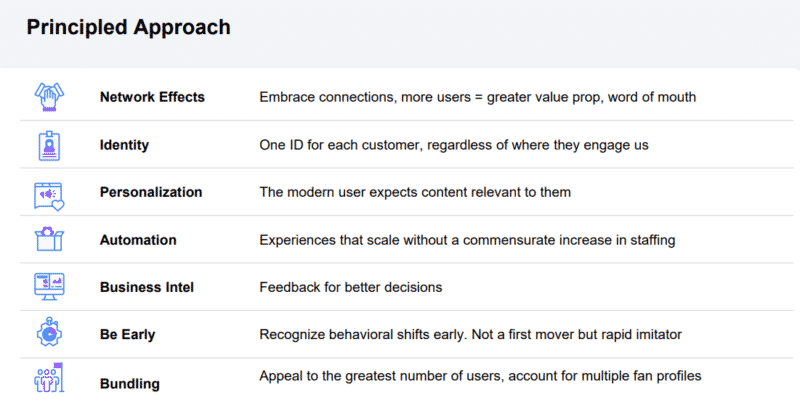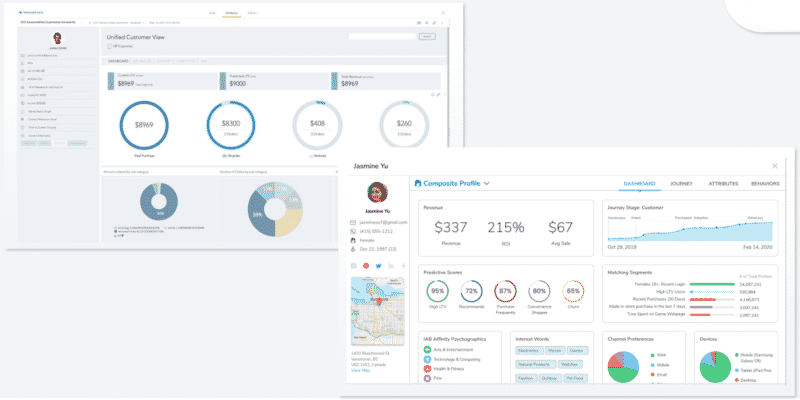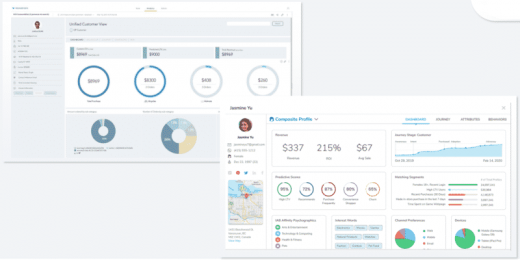U.S. Soccer leans on a CDP to make its marketing automation more personal
The organization revolutionized its approach to fan engagement by centralizing their data and personalizing campaigns.
At a time when sporting events were shuttered, the U.S. Soccer Federation focused its energy on a new goal: organizing its customer data in a way that unlocked a more tactical approach to marketing.
Step one was to implement a customer data platform. And as the world opens back up and soccer is back in action, U.S. Soccer has a new approach to connect with millions of fans while keeping a tight budget and staff.
“We really only have about 15 to 20 people that are working directly on our loyalty program between marketing and our product and business intelligence teams,” said Ross Moses, Senior Director, Analytics and Insights for the United States Soccer Federation. “We don’t have the ability to go in and basically turn on campaigns every day for different types of segments.”
Implementing the CDP helped U.S. Soccer centralize its data for a more complicated marketing automation strategy.
“We needed something that was going to update in real-time,” Ross said. “It’s going to plug into all kinds of data sources and ultimately be able to react in real-time based on who that customer is. If somebody changes from a non-ticket buyer to a ticket buyer, the campaign has to update accordingly, and the same goes for all of our business lines.”

Removing data barriers
Considering a CDP back in 2018 was pretty cutting edge for a nonprofit organization with a relatively small team. But to meet the demands of millions of fans, U.S. Soccer needed to scale their campaigns and other marketing efforts.
The outdated infrastructure was holding back the marketing team from executing many more automated campaigns and sending personalized messages to fans.
“We were sitting on what was really an outdated digital infrastructure, and I use ‘infrastructure’ very loosely because there wasn’t much there,” he said. “We had an outdated website. There was no mobile app. We had a lot of manual tasks that we were doing in order to track who our customers were,” Ross said.
“The whole question around CDPs was a key moment for us,” he added. Ross said the organization explored whether a traditional CRM could solve that challenge, but opted for a CDP since it was more focused on ingesting data from multiple sources and being able to automate campaigns.
“We were doing data prep and data hygiene to run analysis, and then having to redo it and update a week or a month later,” said Ross.
With 80 percent of U.S. Soccer’s website traffic coming in from mobile devices, they needed to make sure they had a mobile-first experience, as well as a mobile app. And now that they were equipped to engage with more fans digitally, they need to keep track of these consumers.
“We needed the 360-degree view of the customer and this tends to be the Holy Grail,” said Ross. “And how do you achieve this? Easy to say, hard to do.”
They adopted single-sign-on credentials for users across all channels, including the website, mobile app and online store. “That’s critical, but also on the back end, making sure we’ve got one ID for one person and we’re appending transactional and engagement data to one profile and not multiple users,” Ross said.
To break through with a more personalized experience, U.S. Soccer also put in place self-service measures so fans could customize their experience. This puts fans in the driver’s seat and also takes some of the workload off of the lean marketing team.

“People basically expect personalization these days,” said Ross. “For as much as the business knows about the individual customer, they should be able to tailor their messaging or marketing or the content based on who they are.”
With a CDP in place to centralize and update customer data, U.S. Soccer can orchestrate more personalized and efficient campaigns with limited resources. And greater success meant more revenue to support soccer programs nationwide.
“We needed to take that step and lay the foundation for what we’re still working on every day,” Ross said. “We’re trying to do more and more of this and leaning in.”
Snapshot: Customer Data Platforms
Marketers today face increasing pressure to provide a unified experience to customers across many channels. And these avenues are growing each day. That’s why customer data platforms, or CDPs, have become more prevalent than ever. These help marketers identify key data points from customers across a variety of platforms, which can help craft cohesive experiences.
Cisco’s Annual Internet Report found that internet-connected devices are growing at a 10% compound annual growth rate (CAGR) from 2018 to 2023. COVID-19 has only sped up this marketing transformation. Technologies are evolving at a faster rate to connect with customers in an ever-changing world.
Each of these interactions has something important in common: they’re data-rich. Customers are telling brands a little bit about themselves at every touchpoint, which is invaluable data. What’s more, consumers expect companies to use this information to meet their needs.
Meeting customer expectations, breaking up these segments, and bringing them together can be demanding for marketers. That’s where CDPs come in. By extracting data from all customer touchpoints — web analytics, CRMs, call analytics, email marketing platforms, and more — brands can overcome the challenges posed by multiple data platforms and use the information to improve customer experiences. Learn more here.
The post U.S. Soccer leans on a CDP to make its marketing automation more personal appeared first on MarTech.
(44)



